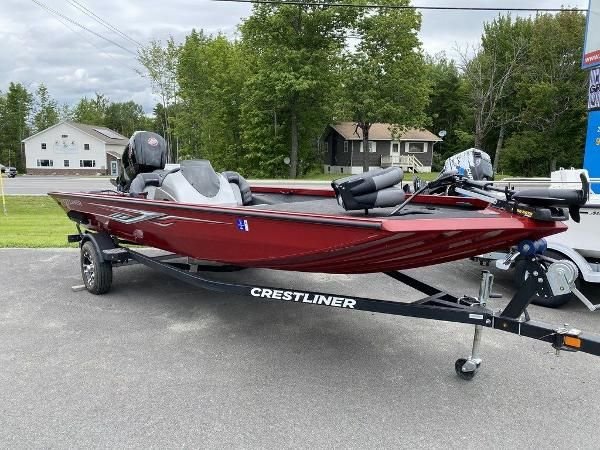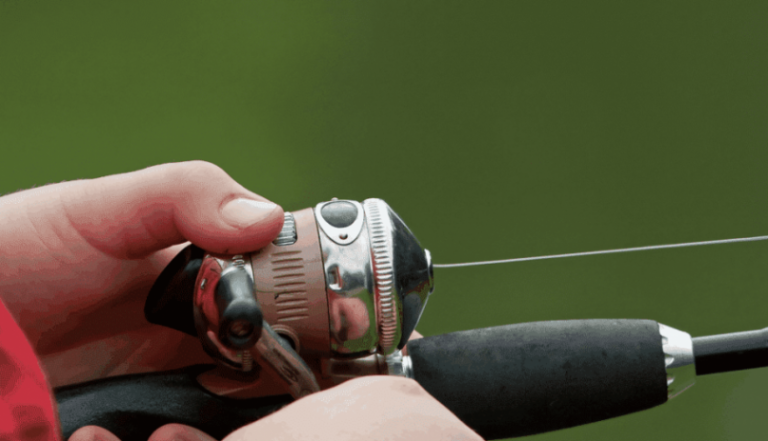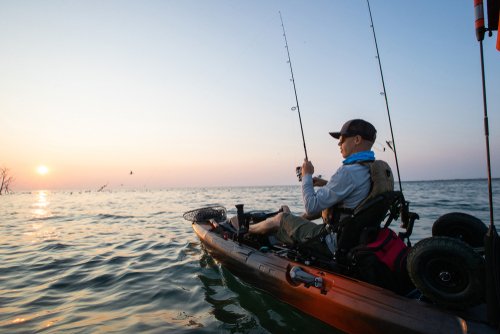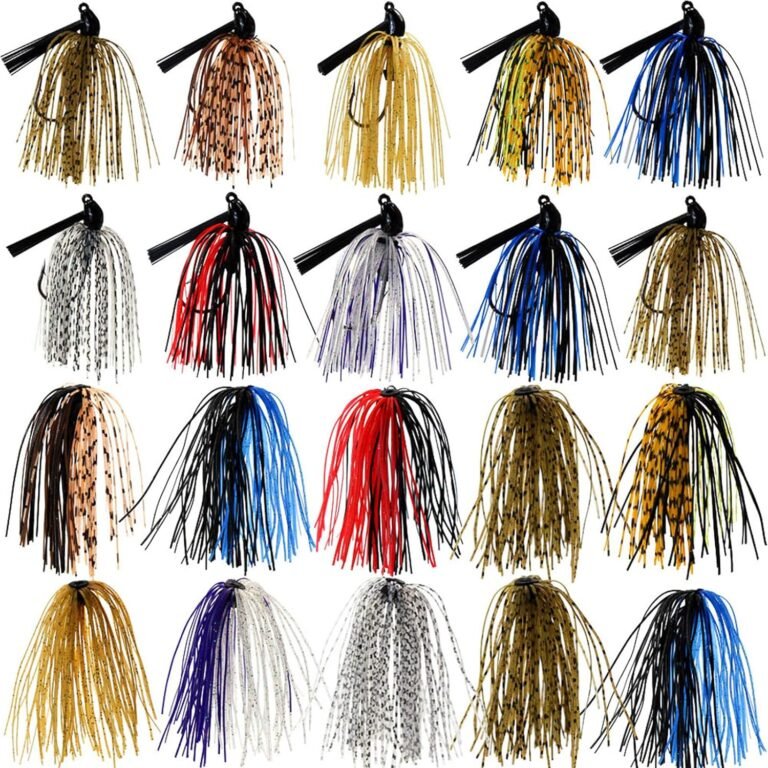Bass fishing holds a significant place in angling culture. But you don’t see a lot of people fly fishing for bass. Let’s further explore this topic!
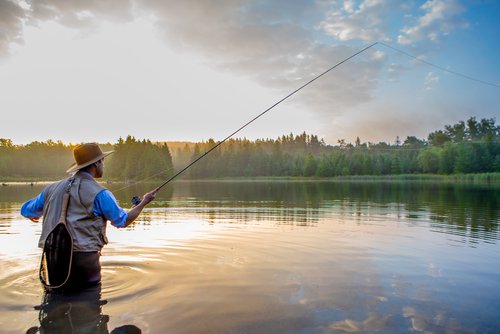
Bass fishing has recently gained immense popularity due to increased media coverage through television shows and online platforms dedicated to outdoor pursuits. The emergence of professional bass tournaments like Bassmaster Classic and FLW Tour has further propelled the sport into the mainstream.
In addition to its recreational appeal, bass fishing contributes significantly to local economies through tourism, tackle sales and conservation efforts. Combining these factors has solidified bass fishing as a beloved and cherished pastime for anglers of all skill levels.
Understanding Bass Behavior
Bass Species (Largemouth, Smallmouth, Spotted)
When delving into fly fishing for bass, it is crucial to understand the different species that inhabit our waters. The three primary species anglers seek are largemouth bass, smallmouth bass, and spotted bass.
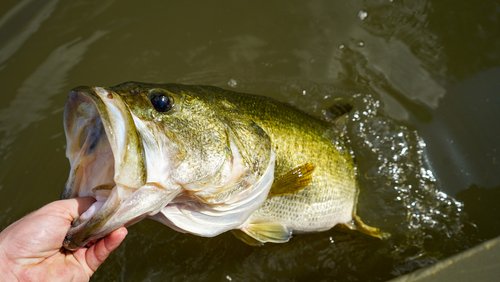
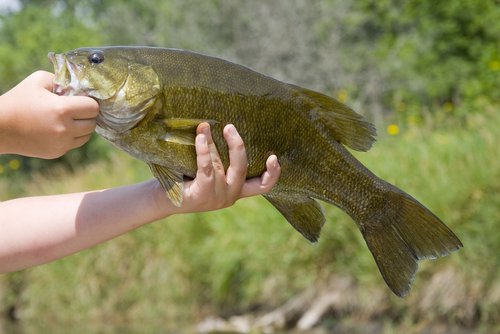
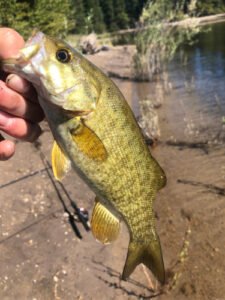
Largemouth bass are known for their large mouths and aggressive nature, often inhabiting lakes, ponds, and slow-moving rivers. Smallmouth bass are more commonly found in clear or rocky streams and rivers.
They possess a reputation for their muscular strength and challenging fights when hooked. Spotted bass generally prefer reservoirs and river systems, showcasing a combination of largemouth and smallmouth bass characteristics.
Habitat Preferences and Seasonal Patterns
Understanding the habitat preferences of bass is fundamental to locating them effectively. Largemouth bass typically inhabit areas with abundant vegetation, such as weed beds, lily pads, fallen trees, or submerged structures like docks or boulders. Smallmouth bass favors rocky areas with moderate current flow, like riffles or deep pools near rock formations.
Spotted bass seek habitats similar to largemouth but can thrive in more diverse conditions. Additionally, seasonal patterns significantly determine where to find these elusive fish throughout the year.
In springtime, they often move into shallow waters close to shorelines to spawn while transitioning to deeper areas during summer heatwaves. As fall approaches and temperatures dip again, they migrate towards shallower waters for prey before winter sets in.
Feeding Habits and Prey Selection
Comprehending their feeding habits and prey selection is paramount to enticing these voracious predators with a fly. Bass are opportunistic ambush predators known for striking swiftly and engulfing prey in a single motion.
Their diet includes a varied menu, including insects, crustaceans, smaller fish, frogs, and even small mammals. Understanding their natural forage allows us to select fly patterns that mimic their preferred prey items.
Common choices include streamers imitating baitfish like minnows or shad and topwater poppers that resemble frogs or wounded rodents. The retrieval technique also plays a crucial role in triggering strikes, with erratic movements often enticing the predatory instincts of bass.
By delving into the intricacies of bass behavior, habitat preferences, seasonal patterns, feeding habits, and prey selection, fly anglers can elevate their success rates on the water. Understanding these aspects helps locate bass and guides our choice of flies and techniques to entice these magnificent sportfish effectively.
Fly Rods: Weight, Length, and Action Considerations
When it comes to fly fishing for bass, selecting the right fly rod is crucial. The recommended rod weights for bass fishing typically range from 6 to 8.
A 6-weight fly rod provides enough backbone to handle smaller bass and allows for delicate presentations when needed. On the other hand, an 8-weight fly rod offers increased power and can easily handle larger flies or fish.
Another essential factor to consider is the length of the fly rod. Longer rods, around 9 feet or more, have several advantages in bass fishing.
Firstly, they enable longer casts, which can be advantageous when targeting fish in deeper water or reaching distant cover. Additionally, longer rods provide better line control during casting and mending, allowing for accurate presentations.
The action of a fly rod refers to its flexibility and stiffness characteristics. Regarding bass fishing, two common action types are fast and medium-fast.
A fast-action rod offers increased power and is ideal for precisely casting larger flies and dealing with windy conditions effectively. In contrast, a medium-fast-action rod balances power and sensitivity, allowing for better accuracy in close-quarters casting situations or when presenting smaller flies.
Fly Reels: Size, Drag System, and Backing Capacity
Choosing the appropriate fly reel is equally important as selecting the right fly rod when targeting bass on the fly. It’s crucial to match the reel size with the weight of your chosen rod for optimal balance while casting and fighting fish. A well-balanced setup enhances overall performance on the water.
In terms of drag systems, having a smooth and reliable drag system is essential when battling strong bass that makes blistering runs after being hooked. The drag system helps pressure the fish, preventing the line from breaking under sudden tension.
Ensure the chosen reel has a sturdy drag system that can handle the power of bass and is easy to adjust when necessary. Backing capacity refers to the amount of line that can be added to the reel before attaching the fly line.
Bass are known for their strong fights and can quickly strip out fly lines, especially in bigger sizes. Enough backing allows you to play fish without fear of running out of line, increasing your chances of successfully landing a trophy-sized bass.
Fly Lines: Weight-Forward vs Double Taper
When selecting fly lines for bass fishing, two common types are weight-forward (WF) and double-taper (DT) lines. The choice between these two depends on your fishing style and target species.
Weight-forward lines have a thicker front taper that helps load the rod quickly, making them ideal for casting larger bass flies with ease. They excel in windy conditions because they can cut through air resistance, allowing for accurate long-distance casts.
Weight-forward lines are well-suited for situations where casting distance is crucial, such as covering expansive areas or reaching fish holding near structure. On the other hand, double taper lines provide delicate presentations and better control at shorter distances.
They have symmetrical tapers at both ends of the line and offer smooth roll casting abilities, making them suitable for precision casting around cover or in tight quarters where accuracy is paramount. Double taper lines excel in situations where finesse and subtlety are required.
Leaders and Tippets: Material Choices and Lengths
The leader and tippet play an integral role in presenting flies effectively while ensuring sufficient strength when battling bass on the fly. The choice of material largely depends on personal preference, but fluorocarbon leaders/tippets are often preferred for their abrasion resistance and invisibility underwater.
When selecting leader lengths, consider the water conditions you’ll be fishing in. In clear water with limited cover, longer leaders ranging from 7 to 9 feet allow for more natural presentations and reduce the chances of spooking wary bass.
However, shorter leaders between 4 and 6 feet may be more appropriate to improve fly control and accuracy in stained or muddy water or when fishing around heavy structures. Choosing the right tippet strength is crucial for matching the size of your fly while ensuring sufficient strength to handle aggressive strikes from bass.
Generally, tippets ranging from 8 to 12 pounds are suitable for most bass fishing situations. However, opting for a heavier tippet strength may be necessary if you’re targeting larger trophy-sized bass or fishing in heavy cover where bass tend to wrap around structure easily.
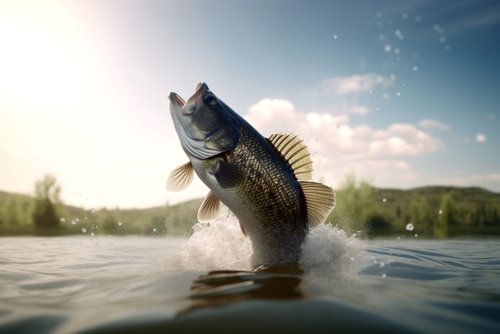
Flies for Bass Fishing
Streamers: Patterns, Sizes, Colors, and Retrieval Techniques
Regarding fly fishing for bass, streamers play a pivotal role in enticing these voracious predators. Effective streamer patterns such as the renowned Clouser Minnows or versatile Woolly Buggers have proven time and again to be irresistible to bass. These patterns are typically tied with flashy materials like marabou or synthetic fibers to mimic the movement of baitfish.
It’s advisable to have a range of streamer sizes in your fly box, varying from small (around 2-4 inches) for finesse presentations to larger offerings (6-8 inches) when targeting trophy-sized bass. Color selection is another crucial aspect; opting for natural hues like olive or brown can imitate baitfish effectively, while brighter colors like chartreuse or white can elicit aggressive strikes from bass.
Retrieval techniques are equally important when using streamers for bass fishing. One approach is the strip-and-pause technique, where you strip the line in short bursts and then pause briefly to imitate an injured prey struggling in the water column.
Another effective method is pulsating retrieves that involve imparting erratic movements by twitching your rod tip or incorporating sudden bursts of speed followed by moments of rest. Experimenting with different retrieval techniques can help you determine what triggers aggressive strikes from bass under various conditions.
Poppers: Designs and Sizes
Poppers are surface flies designed to create enticing commotions that imitate wounded prey struggling at the water’s surface—an irresistible temptation for bass lurking below. These flies typically have a buoyant foam or cork body with rubber legs protruding outwards and a concave face that produces pops, splashes, and ripples upon retrieval. Poppers come in various designs ranging from cup-faced to chugger-style, each creating a distinct sound and action on the water.
Cup-faced poppers make a concave noise when retrieved sharply, imitating the sound of prey fleeing. Chugger-style poppers, on the other hand, produce more of a spitting or gurgling noise that can attract bass even from a distance.
The choice of popper size depends on the target bass species and prevailing conditions. Smaller sizes (around 1-2 inches) work well for schooling bass or during feeding frenzies, while larger sizes (3-4 inches) are better suited for targeting larger individuals or in off-colored water.
Conclusion
Fly fishing for bass provides an exhilarating experience that combines angling skill with an appreciation for nature’s grandeur. As we have explored the art of fly fishing for bass, we have seen how streamers and poppers play integral roles in enticing these formidable fish to strike. By carefully selecting streamer patterns that imitate baitfish and mastering retrieval techniques to mimic injured prey, anglers can successfully entice bass into aggressive strikes.
Likewise, understanding the design principles behind different poppers and tailoring their size to match prevailing conditions will yield fruitful results when pursuing surface-feeding bass. So grab your fly rod, tie on some irresistible flies, and venture out into the waters—unleash your inner angler and revel in the thrill of fly fishing for bass!

